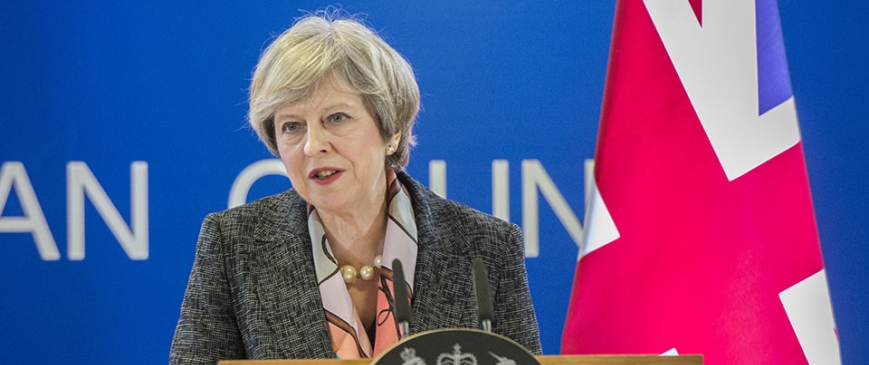
The four traps Theresa May must avoid in her EU divorce letter
Last night Theresa May received the parliamentary authority she needs to start divorce talks with the EU’s other 27 member states. She can now write to Donald Tusk, president of the European council, stating Britain’s intention to leave the EU. But her European partners are likely to put up more of a fight than the British parliament over the terms of Brexit.
May should be careful what she writes. The EU will have the upper hand in the negotiations: without any agreement, in two years’ time the UK will leave the EU automatically. European leaders could unanimously agree to extend the negotiation period but they will be reluctant to do so. The EU would not like the “British question” to stand in the way of agreeing their next budget. The European parliament also wants Britain gone by the next European elections, in spring 2019.
For all the bravado, the reality is that no deal is the worst possible deal. On Sunday a leaked Treasury document argued that a no-deal scenario was “the alternative to membership with the most negative long-term impact on the economy”.
If she is to avoid disaster, May needs to get talks off to a good start. Here are four tips for writing to Tusk.
1 Keep the notification letter clear and simple
The less ambiguity over what the UK wants, the better for Tusk. The European council must agree unanimously on general negotiating principles, on the basis of which the European commission will draft a more detailed negotiating mandate. Rapid agreement on the mandate is in May’s interest. The clock starts ticking the moment she sends the notification letter, but talks will only begin when member states give the commission negotiator, Michel Barnier, the green light.
2 Moderate expectations
The British government claims it can conclude an exit deal and a comprehensive agreement on the future relationship with the EU in two years. But legally the UK will have to exit the EU before it can conclude an FTA – a free trade agreement. A comprehensive FTA would then need ratification by the European parliament, all member states and some regional parliaments, any of whom could veto it.
The most May can achieve in two years is agreement on divorce terms, a framework for future relations and transitional provisions to protect British business until an FTA is in place. May should show in her letter that, unlike some of her Eurosceptic colleagues, she understands that reality.
3 No cherry-picking
In her Lancaster House speech of 17 January, setting out the government’s vision of Brexit, May suggested that the future FTA “could take in elements of single market arrangements” for financial services or the automotive sector. But for many EU decision-makers, including Guy Verhofstadt, the European parliament’s Brexit co-ordinator, this amounts to the UK trying to leave the EU while “opting in to the best parts”. EU member states do not want to punish the UK. But they want to send a strong message to home-grown populists that one cannot be better off outside the EU than inside it.
4 Get the tone right
Britain needs goodwill. It will not get it by grandstanding, bluffing and playing tough. May got the tone right for most of her Lancaster House speech, acknowledging the EU’s role in promoting international liberal order and promising to contribute to European security post-Brexit. But her speech will be remembered more for her threat to turn the UK into a tax haven if she sees the deal on offer as punitive.
If May does not want to further antagonise her partners she should be humble, constructive and flexible in her letter. Threatening economic self-harm did not work for David Cameron when he suggested he could campaign for Brexit if the EU refused to allow him to curb EU migration. If May does not want to go down as the prime minister who wrecked the British economy she had better learn from his mistake.
Agata Gostyńska-Jakubowska is a research fellow at the Centre for European Reform.
